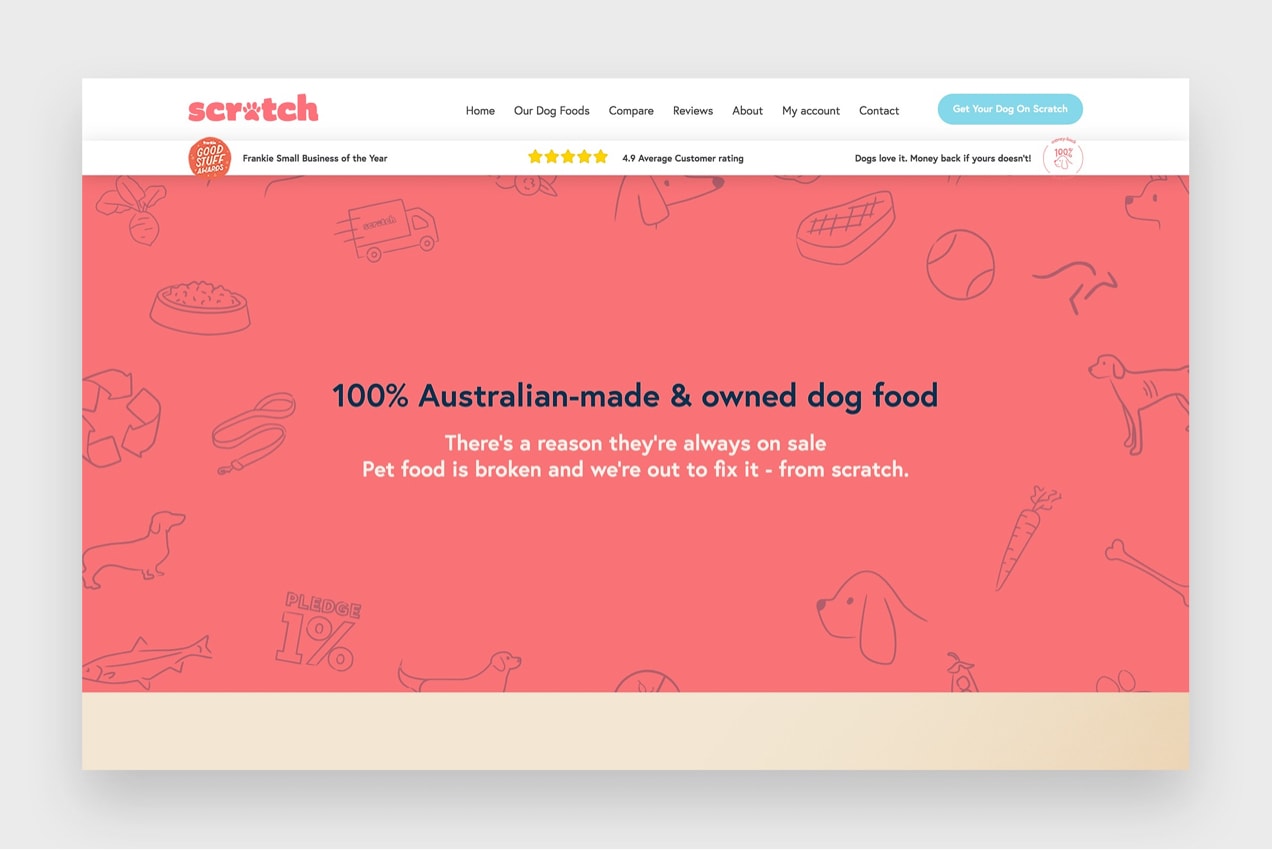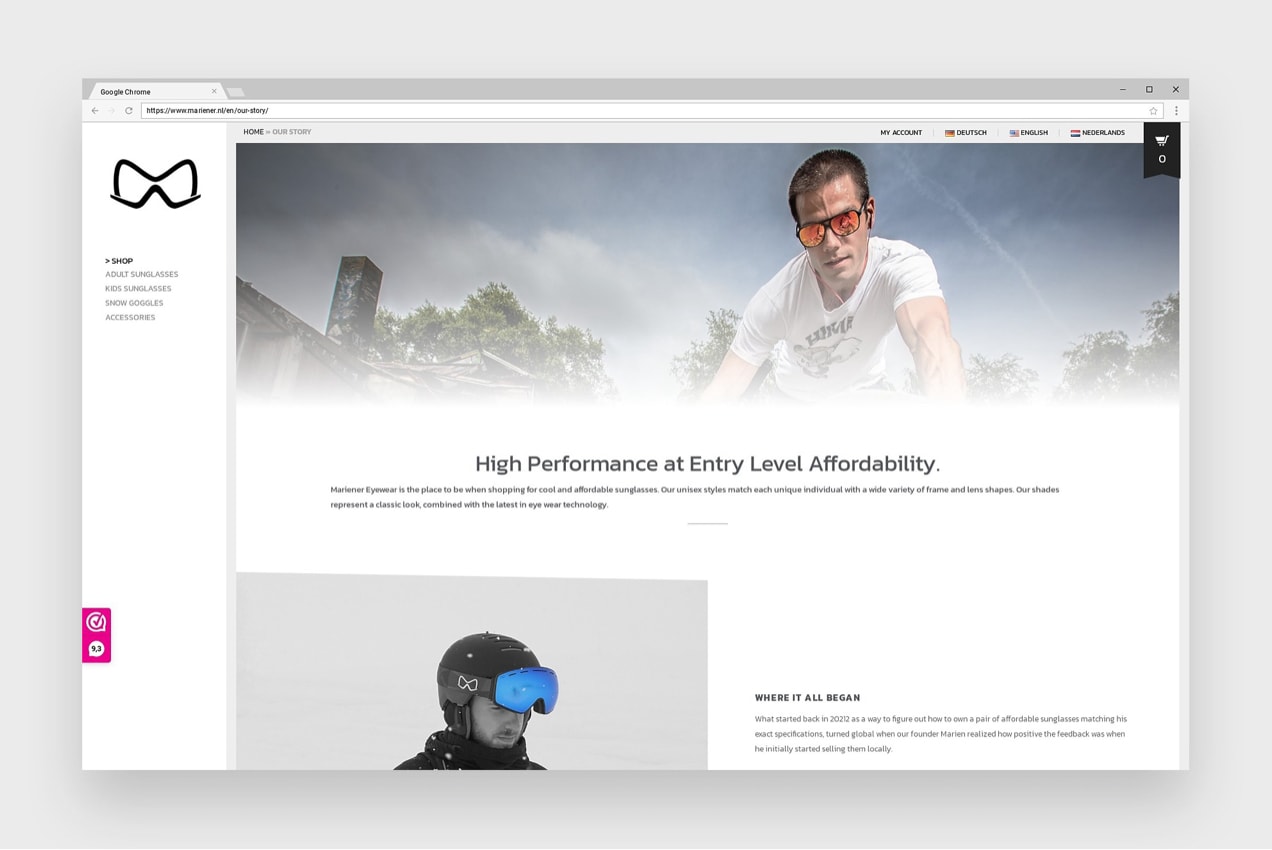There’s nothing quite like entrepreneurship — working for yourself and doing something you’re passionate about! But starting an online business is about more than money: it’s about taking control of your life and finding personal fulfillment while meeting a need in the world.
Your business may give you additional income that lets you support your family or leave an unhealthy work situation. You may be able to bring jobs to your community, or draw attention to an issue that’s been overlooked.
The journey will be both exciting and rewarding — and if you start off on the right foot, successful. So we’re putting together a seven-part series — titled From Idea to First Customer — with all the tips, resources, and tools to inspire a great idea, empower you to execute it, and lead to your very first sale.
Navigate the Journey
Part One: Choosing an Audience
Part Two: Finding a Problem to Solve
Part Three: Selling It Before You Make It
Part Four: Creating the Product
Part Five: Choosing an Operating System
Part Six: Getting Your Product to Your Customer
Part Seven: Creating Happy Customers
Today we’re starting with step one: choosing an audience.
Your audience is the group of people who are interested in your products or services.
They’re the people whose problems you solve. A successful, sustainable business focuses on meeting the needs of its customers. And to do that, you have to understand them.
Start your new enterprise by figuring out your audience — yes, even before deciding what products you’ll sell. Already have a business idea? That’s fine! We still encourage you to go through this process, fine-tune your audience definition, and get to know them even better.
Why start with the audience?
In This is Marketing, Seth Godin writes, “It doesn’t make any sense to make a key and then run around looking for a lock to open. The only productive solution is to find a lock and then fashion a key.” Creating products for the people you want to serve is much easier than finding people who want the products you’ve already created.
Your audience impacts every aspect of your business, from product development and website design to customer service and marketing. When you know who you’re creating products for, you can build around their needs and get it right the first time — instead of investing time and money, only to change business models a year later because you weren’t connecting with customers. Without customers, you have no business.
Choosing a focused audience also minimizes competition. Let’s say you sell garden tools. If you decide to serve an audience of city dwellers with rooftop gardens, you’re not competing with a store that sells to people in rural areas with acres of land. These two groups are looking for very different products and will choose businesses that meet their specific needs.
Finally, starting with an audience helps you focus on the value you provide, rather than reacting to the marketplace. Competing with other stores based on price is a race to the bottom; there will always be someone who can sell the same products at a lower cost. But when you provide a solution designed for a specific group of people, you won’t need to depend solely on low prices to stand out and make sales.
How to define a target audience
When defining your audience, there are two common approaches that can maximize your chances of success. The first is to focus on a group that you’re already a part of. This makes market research easier — you already know where to find people to test ideas and understand what truly excites them. The second is to serve people that are less familiar to you, but work with someone who’s intimately familiar with your target group and can give you insights, introduce you to important people, and serve as an advisor.
“Don’t begin with machines, your inventory, or your tactics. Don’t begin with what you know how to do or some sort of distraction about your mission. Instead, begin with dreams and fears, with emotional states, and with the change your customers seek.” – Seth Godin
Demographics are important, but psychographics are often a better place to start.
Demographics are the external or physical characteristics of your audience: their age, ethnicity, gender, and occupation. Psychographics are the psychological characteristics of your audience, their internal motivations: their wants, needs, motivations, attitudes, and aspirations.
The fact that a customer is 35 years old, female, and middle class does impact her purchasing decisions, the fact that she loves spending time outdoors and wants to share that with her children is even more important. Those interests and desires will lead her to purchase a family-size tent or a bike rack for four, while her income level might affect the budget she’s working with. It’s important to understand all aspects of your customer.
Ask yourself: what makes your audience unique? Is it what they love to do? A problem they have? A change they want to see in their lives or the lives of their loved ones?
Here are a few other ways to narrow your audience:
- People you connect with and care about. Are you passionate about a certain group of people? Perhaps you love interacting with car enthusiasts, small business owners, or new fathers. (And remember: If you don’t share the same passions, that’s fine, too; you can always work with someone who does.)
- The values people hold dear. We all have values that make up our worldview and impact our decisions. An example might be, “I’m concerned about preserving the earth for my children, so I only purchase sustainable products.” Another could be, “Having the latest, most modern technology is important to me, so I purchase a new smartphone each time one is released.” You can’t change someone’s values, but you can impact the decisions they make based on those values. Aligning your products and services with the values your audience uphold is often an effective strategy.
- Customers who are underserved. Think about a group of people with needs that aren’t currently being met. Maybe they need more time, an easier process, or a more affordable option. You have the opportunity to fill a gap in the market and serve customers at the same time.
Want to take things one step further? Try creating a buyer persona, which is a fictional profile that represents your audience. This is an advanced strategy and may help you visualize the people you want to work with.
How to learn about your audience
Assume nothing, even if you think you’re exactly like them! People make decisions based on a wide range of factors, and it’s important to find out what those are and how they’re different from your own. Here are a few ways to do this:
- Conduct in-person interviews. Sit down, face-to-face, with real people from your audience. Talk to them about their experiences, beliefs, and problems. Why do they make the decisions they do? Chatting in person lends itself to natural conversations that can provide much more detail and context than something like an online survey.
- Spend time where they spend time. Are your audience members active in Facebook groups, industry forums, or subreddits? Get involved, too. Pay attention to the discussions they’re having and the language they’re using. Participate and ask questions.
- Create surveys. Use a survey tool like Crowdsignal to reach out to audience members on social media or via email. HubSpot provides a great guide to writing effective survey questions for additional information.
Pro tip: Want to learn even more about your audience? If you have an idea of their problem, interests, or other characteristics, use keyword planning tools (like Google Keyword Planner) to collect more detail. Search for one problem or interest and you’ll get related terms and an estimated search volume. This is a great way to hone in on common products and services people are looking for and determine the size of your potential customer base.
Examples of audience-focused businesses
What does this look like in practice? Let’s take a look at two online stores that are finding success.
1. Scratch Pet Foods
Founded by Mike Halligan and Doug Spiegelhauer, this Australian-based company sells dog food that changed the industry. Early on, they took the time to understand the needs of pet owners, and got some key information they could use to meet an unmet need :
- Almost all dog food was sold in pet stores.
- Customers largely mistrust pet food companies.
- Pet food companies aren’t required to disclose ingredients, which exacerbates mistrust.

Mike and Doug spent time talking to dog owners in person and in online communities. Then they created a customizable online subscription service that cut out the retailer, focused on better ingredients, and delivered high-quality dog food at a lower price point with free shipping.
Now, they have a plethora of happy customers and have been featured in press around the world. Check out their full story or view their online store.
2. Mariener Eyewear
In 2012, Mariener Eyewear founder Marien Klootwijk was looking for a pair of replacement sunglasses with very specific features and couldn’t find anything in his budget. So he designed products for customers like him: people who want simple, high-performing eyewear that doesn’t cost an arm and a leg.

Focusing on that specific audience impacts everything from sourcing to product development. They use durable, flexible materials; feature impact-resistant lenses; and add a hydrophobic coating that’s resistant to dirt, grease, and water. They even developed the world’s first matte reflective snow goggles! Their website design is also built around that same principle: no-nonsense, functional design.
To learn more about their story, read their full case study or shop their products.
Be specific
Hone in on the specific people you want to serve. The more focused you are, the more successful you’ll be at meeting their needs. As your business grows and you get to know your audience better, you can always shift.
So dive in and get to know them! These are the people you’re going to work with, whose passions you’re going to share, and whose needs you’re going to meet.
Where do we go from here? Now that you’ve identified your audience, the next step is to figure out the problem you’re going to solve for them. Keep an eye out for the next article in this series: Finding a Problem to Solve.
Want to explore this further?

Yeah defining the target audience is one of the critical decisions to make. You can go for niche market, you can earn really good profits. But, the market is small. In my case at Dazzle Accessories we chose the niche that are looking to buy designer jewellery but don’t want to spend hefty amount. In early stage many challenges were there but ultimately the chunk we targeted responded very well.
You’re absolutely right! Thanks for sharing your story!
Great read! fun to see Mariener featured as an example.
Thanks for such a great example!